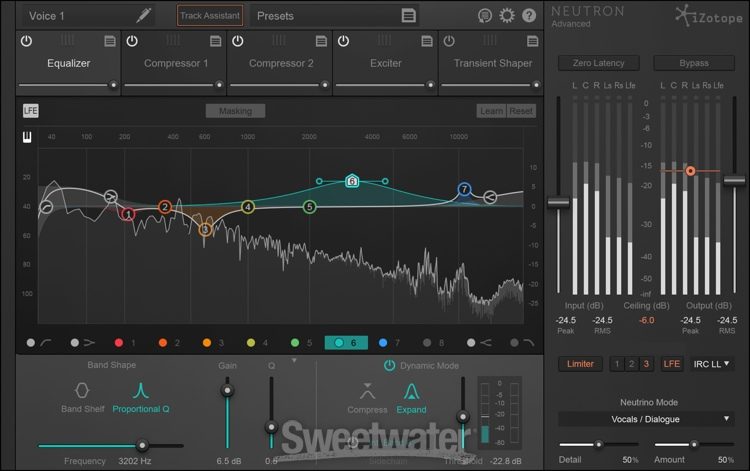
I time the release, on the other hand, to last for the duration of the kick drum hit, so the kick is heard in totem. Personally, I keep the attack a little slower than the release, tweaking the attack to let a little of the bass transient through (should there be one), so the bass doesn’t lose too much impact in that vital area. Assign the sidechain’s input to the kick drum, and tweak both the attack and release to the appropriate values. Here you can set up a dynamic equalizer or multiband compressor on the frequencies of the bass that mask the kick. Say you’ve got a lovely, perfectly mixed rock bass, but it’s getting in the way of the kick drum. This trick works in a variety of genres, and here’s an example of how: But you can do this in multiband for an even more precise, yet subtle effect. You hear obvious examples of this all the time in EDM, where the bass sucks and ducks to the kick. One of the easiest ways to calibrate the low-end properly is to sidechain a sustained bass element to a more percussive one.
Sidechain elements to each other to make room Further bolstering the utility of Neutron 3, you can equalize both elements from the same plugin, which is especially useful, as it saves time.Ģ. Open the kick drum plug, and you’ll likewise see where your bass is messing with the kick.

Open Neutron 3 on the bass, and you’ll see where the kick is obfuscating the signal in an easy to read graph that lights up at the problem points. Simply place Neutron’s Equalizer module-or Neutron itself-across your bass elements, turn on the masking feature, and assign the elements in question to monitor each other. With tools like Neutron 3’s handy Masking Meter, we don’t have to carve more space than necessary. Yet the bass draws us closer to the music we feel it in our chests, so we resist the urge to carve space here, lest the mix grow cold and sterile. Yes, frequency masking in the low-end is especially odious, as the imbalance can affect all other mix decisions. Second, with a buildup of both, you may experience an overblown, woofy low-end-a bass response that throws off the balance of your mix. First, you won’t be able to hear either instrument particularly well. In the case of low end, one could imagine the fundamental of a bass masking the sonic information of the kick, which leads to two specific problems. So check out the video, and read more tips below.įrequency masking occurs when two instruments are fighting for the same frequency space.

We can, however, address that third issue with some concrete tips and tricks-giving you the tools you need to accrue experience in managing low end.
Izotope neutron with hard rock full#
Now, we here at iZotope can’t come over to your place and treat your room for you likewise, while I’d love to donate a pair of excellent full range monitors to everyone who asked for them, that too is impossible.
Izotope neutron with hard rock how to#
Yes, it takes time to learn how to identify low-end issues, to tell them apart from your room and monitoring issues, and to find practical, actionable solutions. The third factor is experience, or a lack thereof. Another factor compounding the issue is monitoring, especially in project studios nearfield monitors, often utilized in home-based mixing rooms, tend to taper off below a bass-hound’s favorite frequencies subwoofers are untenable in certain situations (ones involving neighbors, often) and cans tend to over-exaggerate the lows, leading to a cure that might be worse than the disease.

For one, imperfect rooms treat low-end information imperfectly-and many rooms are imperfect. At some point, every engineer has had difficulty taming the beast that is low end.


 0 kommentar(er)
0 kommentar(er)
